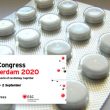Adding rivaroxaban to the standard treatment might reduce events incidence in lower limbs, heart, and brain, in patients with peripheral vascular disease undergoing revascularization. These new data resulted from the analysis of the VOYAGER PAD subgroups and were presented at the virtual ESC 2020. The COMPASS study had reached similar conclusions using 2.5 mg rivaroxaban...
CAPTIS, a Novel Cerebral Embolic Protection System in TAVR
The incidence of stroke after TAVR ranges between 2 and 5%, depending on the series, which has been associated with higher morbimortality, affecting patient quality of life and their psycho-social environment. Many cerebral embolic protection systems have been developed in response, and even though they have been shown beneficial in many studies, their role in...
Cerebrovascular Events in the COAPT Study
Transcatheter edge-to-edge repair (TEER) with MitraClip has demonstrated its benefit compared with complete guideline-directed medical therapy (GDMT), according to the results of the COAPT Study. While cerebrovascular events (CVE), such as stroke or transient ischemic attack (TIA), are rare, they can occur during the procedure (transseptal puncture, device positioning, or device release) or during follow-up...
Cerebral Protection Devices during TAVR in the Daily Practice
The theory behind the use of cerebral protection devices during TAVR is good, but hard to test. The daily practice provides a far bigger number of patients, and therefore might be able to better show how to prevent one of the hardest events during TAVR. This study resorted to Germany’s TAVR database between 2015 and...
TCT 2020 | Efficacy of Cerebral Protection Device TriGUARD 3 During TAVR
Cerebral protection device TriGUARD 3, designed to cover all supra-aortic vessels during transcatheter aortic valve replacement (TAVR), is safe to use, according to the outcomes of the REFLECT II study. The technical feasibility of the device, which requires transfemoral access, does not seem to have an impact over clinical events. The primary safety endpoint was a VARC-2-defined...
Cerebrovascular Events After TAVR May Be Especially Serious
Stroke events do not seem to be related to valve thrombosis or structural degeneration, but to a higher baseline risk in patients who undergo transcatheter aortic valve replacement (TAVR). About 1 in 20 patients who underwent TAVR experienced a stroke or transient ischemic attack during follow-up. According to this new analysis, the consequences of these events...
Effect of More Expedited Carotid Intervention on Recurrent Events
This study shows the benefit of reducing waiting time between acute events and intervention in patients with severe symptomatic carotid stenosis. Its outcomes support the efforts to reduce patient management. Moreover, it could be used as an indicator of clinical practice quality. The risk of recurrent events after an ischemic event is significantly higher in...
Can We Prevent Cardiovascular Events without Aspirin?
As regards the use of antithrombotic agents, the risk of bleeding will always be an issue, and in the case of aspirin this risk is twice as big: it does have the desired antiaggregation effect, but on top of the increased bleeding risk, it has a damaging effect on stomach lining that increases the risk...
EuroPCR 2018 | Meta-Analyzis on Cerebral Protection Devices during TAVR
The risk of stroke is inherent to TAVR and, apart from clinically manifest events, there is abundant evidence of cerebral embolic lesions during TAVR provided by studies using diffusion weighted MRI or transcranial doppler ultrasound. Several devices have been developed to reduce the risk of stroke, though they have been assessed by relatively small trials...
Effects of Cerebral Radiation on Interventional Cardiologists
In recent years, there has been a growing concern about the occupational hazard for interventional cardiologists who have high and unprecedented levels of ionizing radiation exposure. microRNAs are a class of short and highly conserved non-coding RNA molecules (about 22 nucleotides) that become altered (dysregulated) in many diseases. Read also: “Nearly half of interventional cardiologists may...







